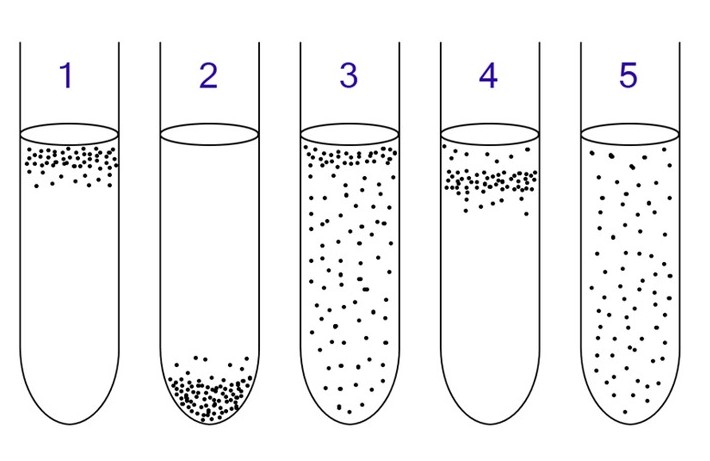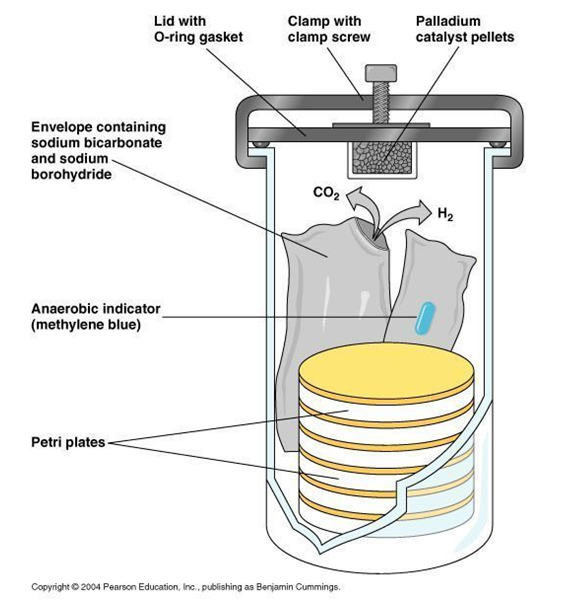28 Oxygen and Microbial Growth
28.1 Oxygen and Microbial Growth
Oxygen is a key nutrient for the growth of many microbes; however, it can also be toxic (in particular to microbes which do not possess the enzymes required to detoxify reactive oxygen species). Microbes are often classified based on their growth requirement for oxygen (e.g., obligate anaerobes, facultative anaerobes, aerobes, etc.) While many human pathogens are able to at least tolerate the presence of oxygen, others (e.g., some of the pathogens that infect the intestinal tract) are strict anaerobes.
There are a number of different techniques used in microbiology laboratories for achieving anaerobic conditions to permit the growth of different microbes. In this lab, you will use two different techniques: use of thioglycollate medium and use of an anaerobic jar.
28.1.1 Thioglycollate medium
This medium contains a reducing agent, sodium thioglycollate, that binds to and consumes O2 and thus maintains a low oxygen tension in the medium. The medium also contains a redox indicator, resazurin, which turns pink in an oxidized environment. It is essential to use fresh thioglycollate medium (as indicated by the absence of pink colour).
Growth of organisms in thioglycollate medium will depend on their oxygen requirements (Figure 28.1).

Aerobic organisms will grow at the surface, where the [O2] is highest.
Obligate anaerobes will grow at the bottom of the culture tube, where the [O2] is lowest.
Facultative anaerobes will grow throughout the tube, but exhibit more growth near the top (because they preferentially use aerobic respiration, which generates more ATP than anaerobic respiration or fermentation).
Microaerophiles grow near but not at the surface, as they require O2 for growth (they cannot grow anaerobically), but are inhibited by high [O2].
Aerotolerant organisms grow throughout the tube: they do not use O2 as an electron acceptor, but produce catalase and/or other enzymes for the detoxification of reactive oxygen species and are therefore not killed in the presence of O2.
28.1.2 Use of a GasPak system
This system uses a sealed jar and a GasPak, which generates carbon dioxide and hydrogen. A palladium catalyst in the jar combines the hydrogen with oxygen (generating water); this then creates an anaerobic atmosphere in the jar (Figure 28.2).

An indicator strip is used to verify that anaerobic conditions have been established: it contains methylene blue, which becomes colourless in the absence of oxygen.